Viking Warriors – 10 Interesting Facts
The period of the Viking Age—from the late 8th to the early 11th centuries—lends itself well to mystery and intrigue. One would definitely consider Viking warriors to be fierce and feared in battle and on the ocean. Contemporary popular culture, much in the vein of their reputation for raiding, portrays Viking warriors as barbarians. This perception of Viking warriors, though, really is much more complex and interesting. 10 awesome facts about Viking warriors, to take you back in time, smelling the air full of adventure, conquest, and rich cultural heritage.

1. Diverse Backgrounds and Origins of Viking Warriors
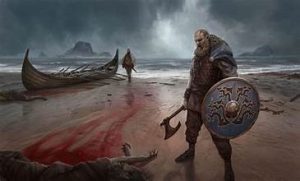
Unlike the kinds of images one pictures in mind, Viking warriors were not monolithic. In fact, they originally hailed from various parts of Scandinavia, present-day Norway, Sweden, and Denmark. Different parts of Scandinavia brought different strengths or traditions into the Viking warrior culture. They were not just noble families but farmers, craftsmen, and traders who would lay down their tools to take up arms in fortunes of fame.
2. Viking Warriors, Masters in shipbuilding and navigation.
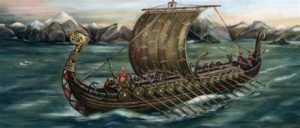
Indeed, Viking warriors were great shipwrights and navigators. Long ships, speedy and agile, were wonders of shipbuilding. Low draft allowed the Vikings to sail in open seas and shallow rivers, so they could attack unexpectedly and retreat. One can say that their navigating skills were so developed that they visited such faraway places as North America centuries in advance of Columbus.
3. Complex Social Hierarchy of Viking Warriors
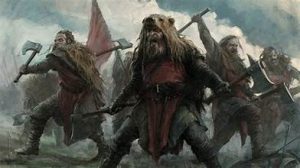
A Viking warrior society consisted of more than simple muscle. The social structure was complex, with highly developed senses of loyalty and honor, in which the warriors were members of a close group headed by a chieftain or king. The society regarded loyalty toward the leader and fellow warriors above all else, creating one of the bases on which the military triumphs rested. Feuds and alliances, so usual among the Germanic tribes, defined the political shape of things during the Viking Age.
4. Fearsome battle techniques of Viking Warriors
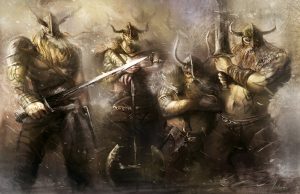
Legendary were the fearsome battle techniques and strategic powers of the Viking warriors. They combined shock tactics with psychological warfare. One of the most impressive strategies was the shield wall, where warriors would lock shields together to create an impenetrable barrier. This tactic gave them advantage both ways: offensive and defensive. Thus, they were nearly unbeatable in battle.
5. The Shield maidens: Warrior Women
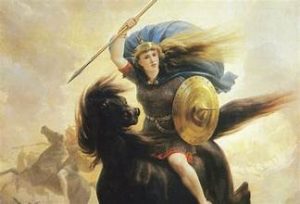
Although almost everything people imagine about Viking warriors is male, there were fierce female warriors known as the shield maidens. Notable among them are those ladies who fought against battles and were told by the Norse Sagas and legends. Archaeological discoveries and text sources do attest that some women did take up arms against convention, although their historicity has often been called into question.
6. Rich Mythology and Religion
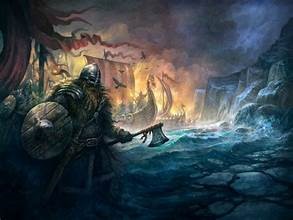
Religion and mythology played an immense part in the lives of Viking warriors. They had gods constituting a pantheon, among whom the god of war and wisdom, Odin, was considered the chief deity. The belief held by the warriors was that in case of death in battle, they would be admitted to Valhalla, the hall of Odin, where they were further to be trained in preparation for the event of Ragnarok—at the end of the world. This motivated them to be fearless in battle as this was the way of joining the begrudged dead at the end.
7. All the intricate Armor and Weapons
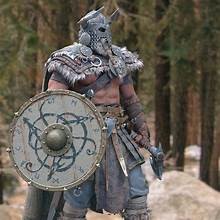
Viking warriors’ costumes had functional as well as symbolic meaning attached to them. The warriors carried on with a variety of weapons, and all were skillfully made; from swords to axes, and spears, the most particularly turned out to be the bearded axe-an epitome of multi-use weapon on the battlefield. Their armor would normally comprise helmets, chainmail, and their wooden shields were richly decorated in many cases. It, therefore, not only served defensive purposes but also the symbolic purpose of showing wealth and social status.
8. Skalds and Oral Tradition
Storytelling played a vital part in Viking culture. Poets, known as skalds, were important in capturing the doings and exploits of the Viking warriors in oral history. It is these stories, full of heroism and interventions by the gods that have been handed down through generations. It will be this fierce oral tradition that will entrench the memory of the Viking warriors and ensure that their exploits are remembered long after their time.
9. Influence on European History
Raids and expeditions by Viking warriors shaped the course of European history. Various settlements and trade routes thus constituted their political and cultural influences, which dotted both regions they encountered. Accordingly, from the British Isles to Eastern Europe, the presence of Viking warriors has bequeathed a lasting legacy that helped forge the cultural and genetic structure in those regions. Their interaction through trade, warfare, or settlement was one of the important factors that shaped Medieval Europe.
10. Legacy of Exploration and Innovation
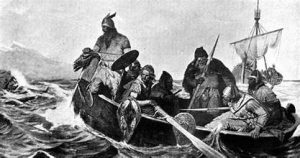
The very spirit of adventure and enterprise that characterized Viking warriors still inspires. Their fearless journeys across unknown seas and into a variety of environments testify to their ingenuity and flexibility. All this is reflected in the remnants left behind in present Scandinavian culture, with its special emphasis on exploration, innovation, and closeness to nature. Their mythology and sagas have survived through time, glorifying the Viking warrior, still capturing imaginations worldwide.
Conclusion
That is, though more or less commonly considered fierce raiders, the martial prowess of the Viking age was so much more humanly complex and multi-dimensional, with roots both in rich tradition and spontaneity. It runs the gamut from shipbuilding prowess to battle techniques and sea-faring, sophisticated forms of social organization, mythology—through it all, people driven by honor, loyalty, and longing for glorification. It is in these ten interesting facts that we begin to realize just how extremely fascinating these Viking warriors really had to be in order to leave their stamp on history whose legacy resounds right into our world today.
At one level, it’s simply a story of the unbowed fighting spirit of the Vikings. At another, however, that saga does grow into an epic tale of nerve and resourcefulness, and of lasting legacy—a triumphal declaration regarding what human potential can glitter for in terms of exploration, adaptation, and survival against the odds. It would be through the historical or mythological lens that immortalized the image of the warrior Viking as an indestructible icon of power and adventure.




